Bubbling Over
A Guide to Sparkling Wine
Love bubbles? You’re not alone; sparkling wine has become one of the most popular wine styles among
wine lovers and wine newbies alike. There’s never been higher-quality bubbly available at
affordable prices, and there’s never been such a variety of sparkling wine styles on wine store shelves.
The better sparkling wines get their bubbly mojo from a secondary fermentation
(either in the bottle, as is the méthode traditionnelle of Champagne, or in a tank through the charmat process),
which traps carbon dioxide gas and provides those beloved bubbles. It helps that bubblies are one of the most
versatile food wines, too, thanks to their higher levels of zesty acidity and their range of styles,
from dry Brut to sweet Doux.
If you’re hankering to expand your knowledge about wine’s sparkling treasures, you’re in luck:
bubblies are produced all over the winemaking world. Here are five sparkling wine regions worth a look.
Champagne
The granddaddy of sparkling wines, Champagne is named after the region in northeast France where it was created.
The discovery of sparkling wine is often attributed to Dom Pérignon at the Abbey of Hautvillers, but his original
job was to try to stop the bubbles from happening.
Luckily for us, this vinification mistake was subsequently recognized as being awesome,
and Champagne became the standard-bearer for sparkling wine. It gets its bubbles from a secondary
fermentation in the bottle, stored in underground caves, turning a base wine made from Chardonnay,
Pinot Noir, and Pinot Meunier grapes into what we know as Champagne. Contact with the yeast cells
during the secondary fermentation process gives Champagne its signature body, depth, and brioche notes.
Most Champagne is blended to produce a signature “house style,” but exceptional vintages are made from
single harvests and labeled with the harvest year. You can find Champagne in every style to suit your fancy,
from bone dry to dessert-style. It’s still the most complex, ageable, and delicious bubbly that money can buy,
though you’ll need a fair amount of money to get a great one.
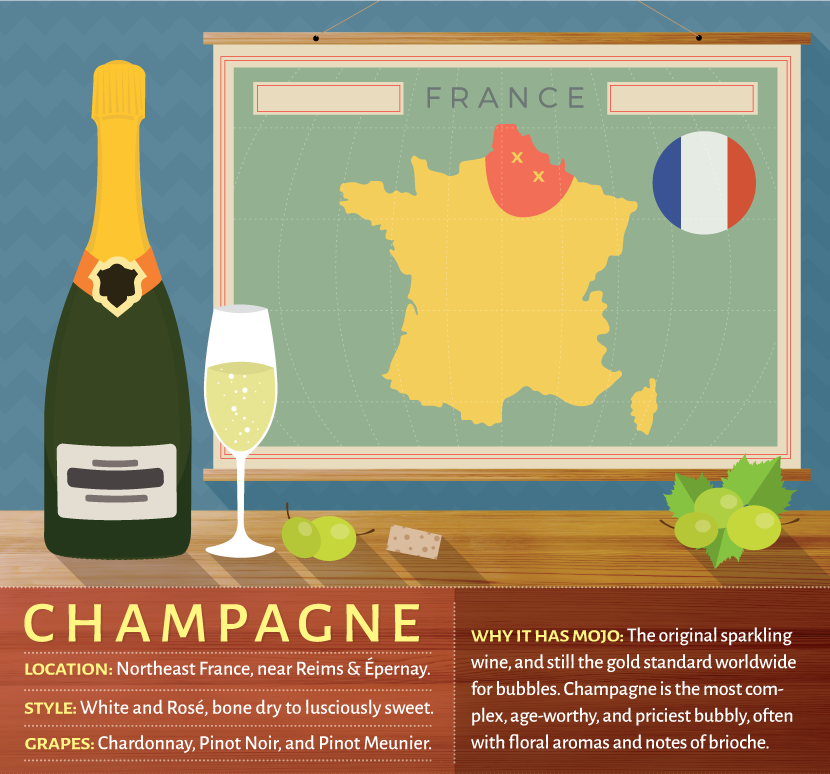
Cava
Since the mid-1800s, Spain’s Catalonia region has been making cava, named after the caves
in which the original bubblies were aged. Today, production of Spain’s most famous sparkling
wine is centered in the area of Penedès.
Cava employs the same méthode traditionnelle production process used in Champagne.
The result is high-quality sparkling wines that often have a yeasty, toasty complexity
similar to Champagne, although they are usually lighter in mouthfeel and have an overall
fruitier character. Cava is made primarily from indigenous Spanish grapes: Macabeo,
Parellada, and Xarel-lo.
Cava also mirrors Champagne’s variety, coming in white and rosé versions that
range from brut nature (very dry), to the sweet semiseco and dolsec styles. You’ll
take a step down in complexity from Champagne when you pick up a bottle of Cava,
but you’ll also get very good bubbly at a fraction of the price.
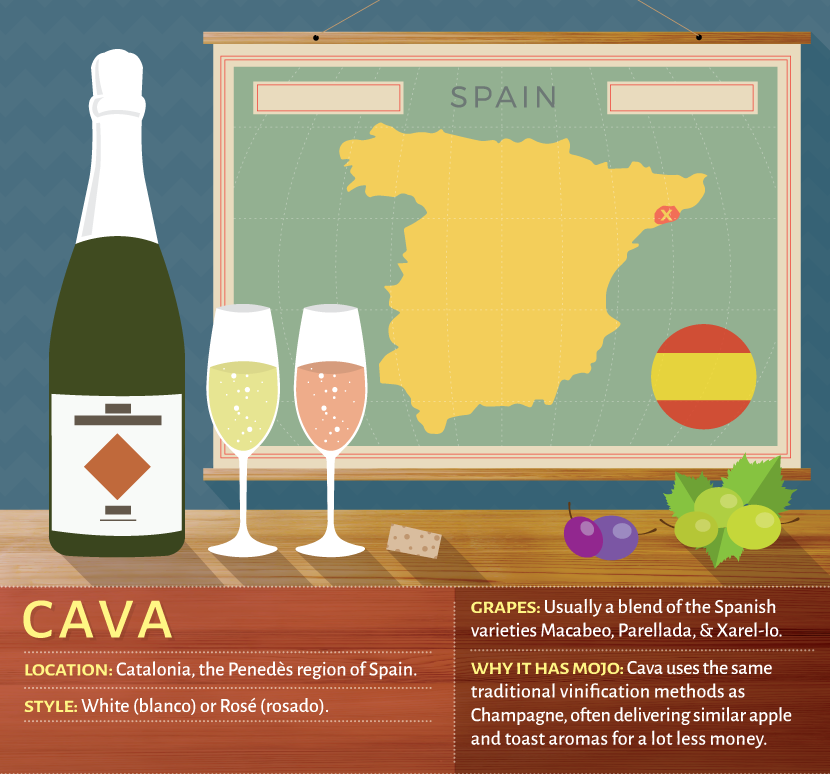
Cremant d’Alsace
Alsace, near the Vosges Mountains and the German border, has been making wine since the late 500s,
and is famed for its white wines. Since 1900, that winemaking prowess has also been applied to
producing Cremant d’Alsace sparkling wine, using the same methods employed in Champagne.
Alsace’s bubblies are usually dry, steely, and austere like the region’s still white wines,
but it offers quite a bit of variety in the grapes it uses. You can find examples made from Riesling,
Pinot Blanc, Pinot Gris, Auxerrois Blanc, Chardonnay, and Pinot Noir (the latter primarily in rosé styles).
You’ll have to look a bit harder (and pay more than you would for Cava) to get your hands on Alsace’s sparkling wines,
but that situation is slowly changing. The world is catching on to the quality of Cremant d’Alsace – it now
comprises over 20 percent of the region’s wine production.
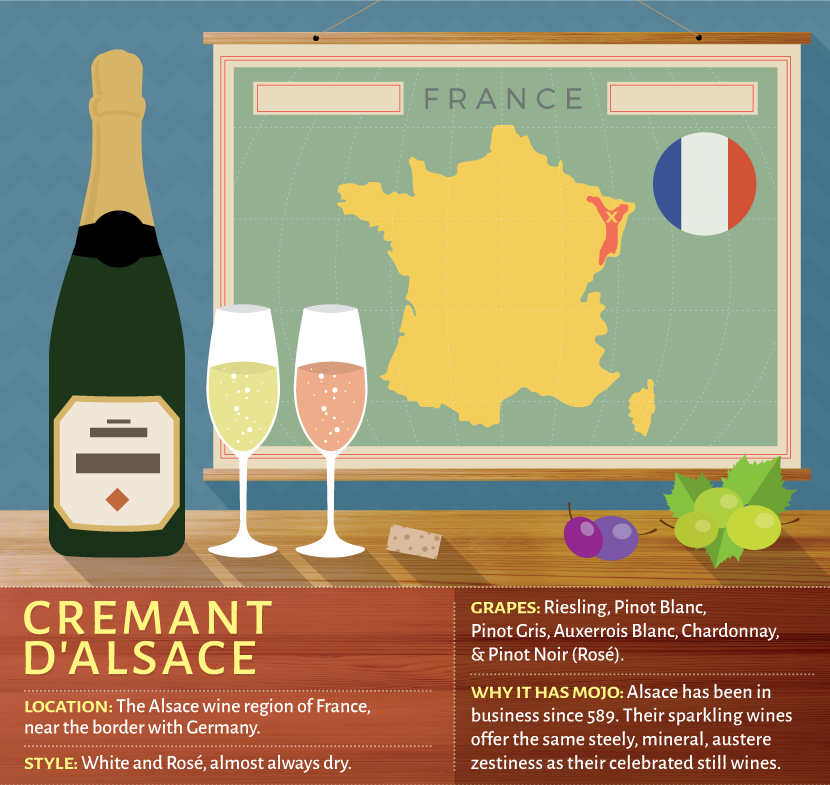
Prosecco
Prosecco’s combination of easy-drinking pleasure and low pricing has taken the wine drinking world by storm,
and the overall quality of Italy’s signature bubbly has arguably never been better.
Produced mostly from the Glera grape in northern Italy, Prosecco uses a different production process
(the Charmat method) than the one made famous in Champagne. Secondary fermentation takes places in stainless
steel tanks rather than in the bottle. This reduces the price of the wine, and emphasizes the fruitiness.
Prosecco can vary in the amount of bubbliness, with sparkling (Spumante) and lightly sparkling (Frizzante) options available.
Prosecco ranges from dry to slightly sweet, but almost always aims for vibrant fruitiness and zesty refreshment over complexity.
This makes it an ideal aperitif, a great match with lighter dinner fare, and an affordable choice for upping the elegance quotient of your evening.
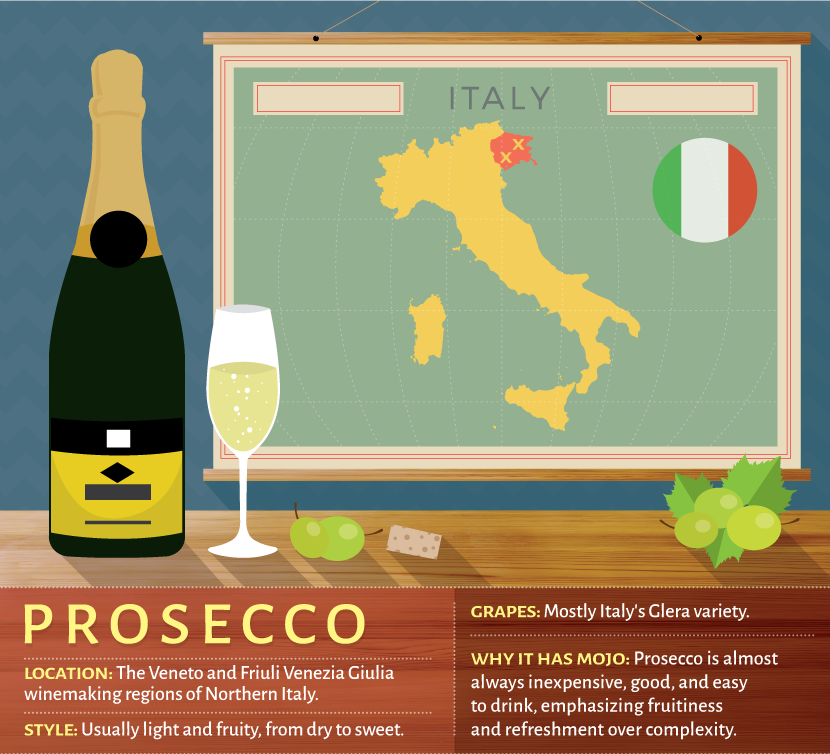
California
California has been in the bubbles business for decades, and its best sparklers have been served at the White House.
Of the world’s significant winemaking regions, California offers some of the widest variety of bubblies that you can hope
to find, made from grapes grown primarily in the state’s cooler coastal regions.
Into sweet? California has you covered. Want affordable bubbles? California can do that, too. Into high-end, complex,
deep fruit expressions? Several California sparkling wine houses offer bubblies to fit the bill.
It’s not an accident that several famous French Champagne houses now have sparkling wine production outfits in the state.
If California’s incredible sparkling wine variety can be summed up into a single rule of thumb,
it’s that the state’s best examples offer an intriguing middle-ground between Prosecco’s fruitiness and drinkability and
Champagne’s more serious depth and age-worthiness.
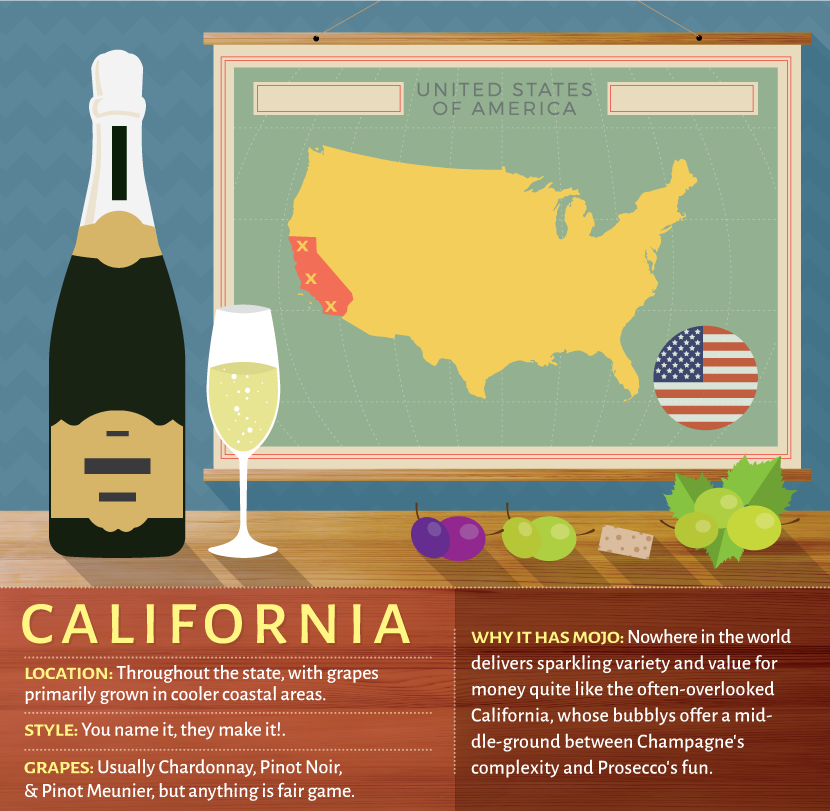
Embed the article on your site

